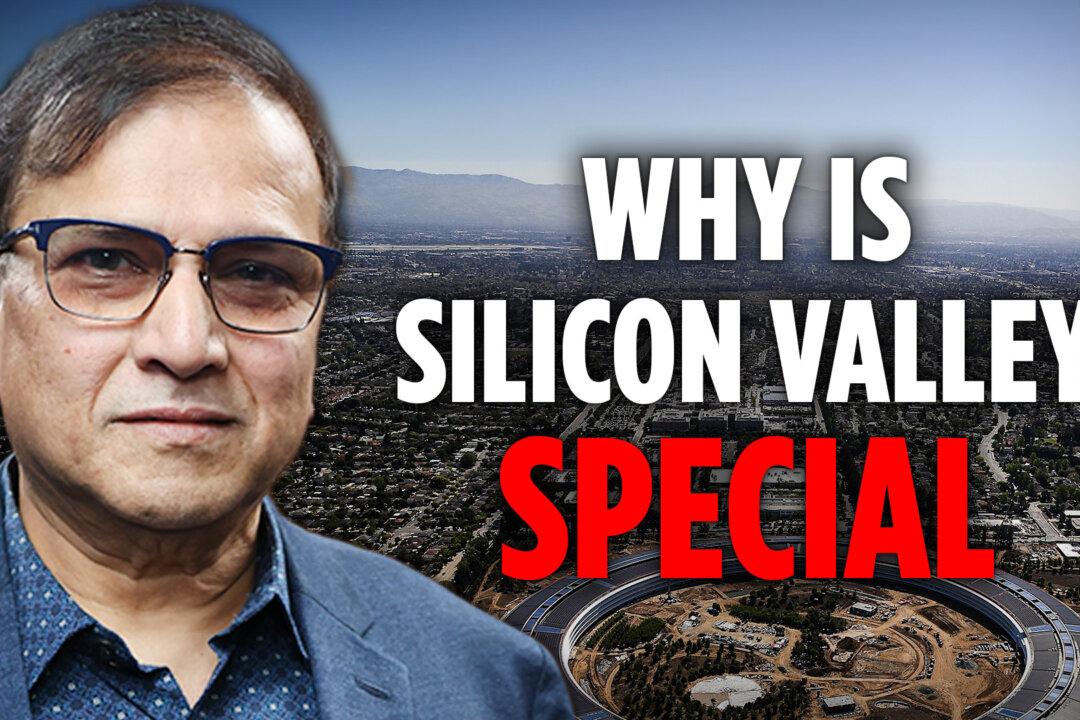Now with time and success, the Valley has transformed from a few people trying to drive Silicon Valley to an entire ecosystem at play, Mr. Kadam said.
The ecosystem is why Apple, Google, and Facebook grew to be such high-value companies, he said.
“Once there is success, success follows success, because once your ecosystem gets developed, it gets better and better with time,” he said.
He said that if you sit in a coffee shop in Silicon Valley, 90 percent of the discussion is people talking about their startups or new technology.
“It’s all there in the air, because we sleep, talk, walk, drink, eat innovation all the time,” he said.
Mr. Kadam focuses on driving growth through business innovation, and he has successfully navigated several mergers and acquisitions, including the acquisition of NanoSec by McAfee in 2019.
He said the emergence of venture capital goes back to the 1990s when a startup needed its own servers, office space, and employees. With no collateral, banks would not invest in a startup, so venture capitalists would start a fund to invest in companies.
Along with that investment, the venture capitalist also mentors, helps make connections, and becomes involved in the company to make sure that a return on its invested money is made, he said.
“Any new innovation is not a slam dunk. There is every chance that it will fail,” Mr. Kadam said. “We will take the risk, because we see bigger rewards.”
He mentioned that as an investor, he looks first at how capable the founder of the company is. He checks whether the person is emotionally well balanced, because he or she is going to go through a rough journey, he said.
A team of founders is better, he said, because you want somebody who can lead business, somebody who can lead technology, and somebody who can lead product.
He said they need to have good chemistry working together, cautioning that a lot of startups fail because of problems among the founders.
If there is a challenge, they need to know how to figure it out and be able to connect the dots, and with these skills they can probably take any idea and take it to market, he said.
Mr. Kadam said the idea that a company starts with and the idea that is eventually taken to market are often completely different, so it’s important that the founders know how to pivot their business to fit the market.
Additionally, he noted that he is seeing a shift in that the future is going to have more single entrepreneurs, with a company built purely on the strength of AI.
Mr. Kadam said that there are a lot of attempts to replicate Silicon Valley elsewhere in the world, with several regions having some success; however, with tech giants like Apple, Google, Meta, and Nvidia in the Valley, and all the experience and talent, nobody has been able to fully replicate it yet.
He said the ecosystem in Silicon Valley provides a unique momentum and a certain way of thinking, leading to an attitude of high risk taking.
In addition, with many established companies in the Valley, he said many of them are willing to adopt new technologies unlike anywhere else.
“I can approach Cisco anytime and go there,” he said. “And I can tell them I’ve got something new, and people are willing to listen to me.”
Another important aspect, he said, is that Silicon Valley culture is to give back—to your school, to the people who helped you, to your friends, and to your community.
He thinks the openness in Silicon Valley is what makes it what it is.
“There are no secrets,” he said. “If you look at Nvidia’s CEO talking about Nvidia, he talks to you openly about his future plans. … He’s not afraid that somebody will clone and copy him.”
Mr. Kadam said that is because he has built a system in such a way that he’s going to get more support, and instead of cloning and copying, people would rather join him.
Something misunderstood about Silicon Valley, he said, is that it’s not purely tech.
There are 150 innovation scouts looking into many different industries, including automotive and agriculture, because tech is the underlying paradigm for every innovation nowadays, he said.
Mr. Kadam’s journey started in India, where he was pushed into entrepreneurship by his boss at the time, who was impressed by a product he had made and told him he should be running his own company.
Mr. Kadam said didn’t have a desire to be an entrepreneur at the time, but when he discussed it with his father, his father told him: “It is not about your experience; it’s about [your boss’s] confidence in you. What you cannot see in yourself, he has seen in you, so take the leap.”
Mr. Kadam now passes on that advice. He tells younger people to take the leap and not be afraid of failures; instead, celebrate failures because there is an opportunity to learn.
“Go ahead, pursue your passion; pursue your vision, your dreams,” he said.








